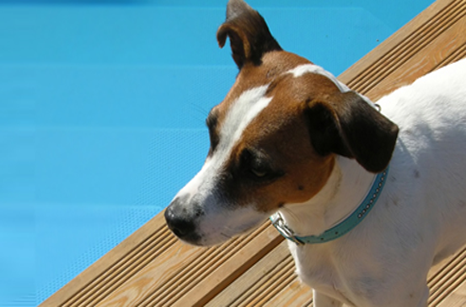
Congratulations on deciding to have your dog spayed. Spaying is the common term used to describe the surgical procedure known scientifically as an ovariohysterectomy. The benefits to your pets health and helping to reduce the pet overpopulation crisis makes this decision easier. There are
many advantages to having your female dog spayed. They include:
- Prevention of “heat” or estrus.
- When in “heat”, the female experiences an urge to escape in order to
- find a mate. This unwanted and dangerous behaviour is eliminated.
- It eliminates the possibility of false pregnancy following the heat cycle.
- Prevention of uterine infection known as pyometra.
- The prevention of breast cancer. Dog spayed before the first “heat” have less than 0.5% chance of developing breast cancer.
- Elimination of the risk of uterine and ovarian cancer.
There are certain circumstances where a spay may be performed for medical conditions.
These include:
- Treatment of intractable false or phantom pregnancy.
- Females with irregular or abnormal cycles due to ovarian cysts.
- Spaying is also carried out on occasions to correct certain behavioral abnormalities.
- Treatment of uterine infection (pyometra) or cancer.
- Dystocia (difficult birthing) or post caesarean-section surgery.
As opposed to popular belief, many of the perceived disadvantages of spaying are false. The most quoted of these are that the dog will become fat, lazy and useless as a guard dog. Obesity is probably the most commonlyquoted disadvantage of spaying. Obesity is the result of overfeeding and
lack of physical activity. By regulating your dogs diet and caloric intake, you can prevent obesity in spayed or intact females. Spaying does not cause a change in personality, guarding instincts, intelligence, playfulness or affection. We recommend spaying your dog at around six months of age.
Spaying is considered a major operation and requires general anaesthesia. When your dog is admitted for surgery, she will be examinedby the veterinarian performing the surgery, and pre-anaesthetic blood tests will be performed if you have chosen to do so. We also recommend intravenous fluids be given during and after surgery to provide a more stable anaethesia and quicker recovery. After your pet is anaesthetized, a breathing tube will be placed in her trachea or windpipe. This will allow the delivery of oxygen and the gas anaesthetic directly into the lungs. The surgery consists of making a small incision just below the umbilicus and removing the ovaries and uterus. Non-absorbable stitches are used to close the incision, which will need to be removed in a few weeks.
In general, complications are rare during the spaying of dogs. With modern anaesthetics and monitoring equipment, the risk is very low. However, as with all surgical procedures, there is always a small risk:
Ø Anaesthetic Complication- It is always possible that any pet could have an adverse reaction following the administration of any drug. Such cases are impossible to predict, but fortunately are extremely rare. Pre-operative bloodwork is a useful screening test that may detect pre-existing problems which could interfere with the pets ability to handle anaesthetic drugs.
It is important that you properly fast your dog prior to surgery according to our instructions. In addition, any signs of illness or previous medical history should be reported to us prior to any sedation, anaesthesia or surgery.
- Internal Bleeding- This can occur if a ligature around a blood vessel breaks or slips off after the abdomen has been closed. This is very rare,and is more likely to occur if the dog is extremely active. Clinical signs include weakness, pale gums, depression, anorexia, or a distended abdomen. This is a true emergency. Please call us immediately!
- Post Operative Infection- This may occur internally or around the incision wound. In most cases the infection can be controlled with antibiotics. This most commonly occurs when the dog licks the site excessively or is in a damp environment.
In the vast majority of cases, there are absolutely no adverse affects following spaying. Rest and restriction of activity are the primarypost-operative care you should provide. Most dogs can resume activity 7 to 14 days after surgery. Until then, leash outings, no swimming, bathing,
running or climbing stairs and lots of rest are the rule.
Benefits to Iv Fluids for Anaesthesia & Surgery
- Intravenous fluids help to maintain normal blood pressure under anaesthesia.
- Intravenous fluids provide venous access in emergency situations and help keep the organs perfused.
- Intravenous fluids result in a more stable anaesthesia, and a quicker recovery for our patients.
Benefits to Post Operative Laser Therapy
Laser Therapy reduces pain and inflammation, stimulates nerve regeneration, muscle relaxation and immune system response. This significantly reduces healing time.
WHY LASER SURGERY?
LESS PAIN – Laser energy seals nerve endings as it moves through tissue. Your pet feels less pain post-operatively.
LESS BLEEDING – The laser seals small blood vessels during surgery which allows us to perform surgeries with extraordinary precision. This also speeds some procedures reducing the amount of anesthesia needed.
LESS SWELLING – Laser energy does not crush, tear or bruise because only a beam of intense light contacts the tissue.


